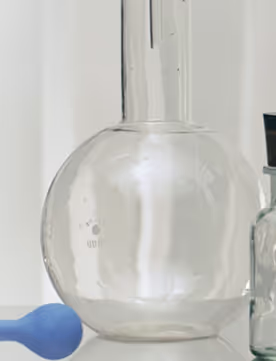Abbott, R. D., Sadowski, A., & Alt, A. G. (2019). Efficacy of the autoimmune protocol diet as part of a multi-disciplinary, supported lifestyle intervention for Hashimoto's thyroiditis. Cureus, 11(4), Article e4556. https://doi.org/10.7759/cureus.4556
Alegria-Torres, J. A., Baccarelli, A., & Bollati, V. (2011). Epigenetics and lifestyle. Epigenomics, 3(3), 267–77. https://doi.org/10.2217/epi.11.22
Alexander, E. K., Pearce, E. N., Brent, G. A., Brown, R. S., Chen, H., Dosiou, C., Grobman, W. A., Laurberg, P., Lazarus, J. H., Mandel, S. J., Peeters, R. P., & Sullivan, S. (2017). 2017 Guidelines of the American Thyroid Association for the diagnosis and management of thyroid disease during pregnancy and the postpartum. Thyroid, 27(3), 315–389. https://doi.org/10.1089/thy.2016.0457
American Thyroid Association. (n.d.). Thyroid function tests. https://www.thyroid.org/thyroid-function-tests/
Babiker, A., Alawi, A., Al Atawi, M., & Al Alwan, I. (2020). The role of micronutrients in thyroid dysfunction. Sudanese Journal of Pediatrics, 20(1), 13–19. https://doi.org/10.24911/SJP.106-1587138942
Bothra, N., Shah, N., Goroshi, M., Jadhav, S., Padalkar, S., Thakkar, H., Toteja, G.S., Shivane, V., Lila, A., & Bandgar, T. (2017). Hashimoto's thyroiditis: Relative recurrence risk ratio and implications for screening of first-degree relatives. Clinical Endocrinology, 87(2), 201–206. https://doi.org/10.1111/cen.13323
Brechmann, T., Sperlbaum, A., & Schmiegel, W. (2017). Levothyroxine therapy and impaired clearance are the strongest contributors to small intestinal bacterial overgrowth: Results of a retrospective cohort study. World Journal of Gastroenterology, 23(5), 842–852. https://doi.org/10.3748/wjg.v23.i5.842
Brossaud, J., Pallet, V., & Corcuff, J. B. (2018). Vitamin A, endocrine tissues and hormones: Interplay and interactions. Endocrine Connections, 6(7), R121–R130. https://doi.org/10.1530/EC-17-0101
Chen, A., Kim, S. S., Chung, E., & Dietrich, K. N. (2013). Thyroid hormones in relation to lead, mercury, and cadmium exposure in the National Health and Nutrition Examination Survey, 2007-2008. Environmental Health Perspectives, 121(2), 181–186. https://doi.org/10.1289/ehp.1205239
Chiovato, L., Magri, F., & Carlé, A. (2019). Hypothyroidism in context: Where we've been and where we're going. Advances in Therapy, 36(Suppl 2), 47–58. https://doi.org/10.1007/s12325-019-01080-8
Choi, Y. M., Kim, T. Y., Kim, E. Y., Jang, E. K., Jeon, M. J., Kim, W. G., Shong, Y. K., & Kim, W. B. (2017). Association between thyroid autoimmunity and Helicobacter pylori infection. The Korean Journal of Internal Medicine, 32(2), 309–313. https://doi.org/10.3904/kjim.2014.369
Esposito, T., Lobaccaro, J., Esposito, M., Monda, V., Messina, A., Paolisso, G., Varriale, B., Monda, M., & Messina, G. (2016). Effects of low-carbohydrate diet therapy in overweight subjects with autoimmune thyroiditis: Possible synergism with ChREBP. Drug Design, Development and Therapy, 10, 2939–2946. https://doi.org/10.2147/DDDT.S106440
Falgarone, G., Heshmati, H. M., Cohen, R., & Reach, G. (2012). Mechanisms in endocrinology: Role of emotional stress in the pathophysiology of Graves' disease. European Journal of Endocrinology, 168(1), R13–R18. https://doi.org/10.1530/EJE-12-0539
Felker, P., Bunch, R., & Leung, A. M. (2016). Concentrations of thiocyanate and goitrin in human plasma, their precursor concentrations in brassica vegetables, and associated potential risk for hypothyroidism. Nutrition Reviews, 74(4), 248–258. https://doi.org/10.1093/nutrit/nuv110
Institute for Quality and Efficiency in Health Care. (2010, November 17). How does the thyroid gland work? InformedHealth.org. [Internet]. Retrieved January 20, 2023, from https://www.ncbi.nlm.nih.gov/books/NBK279388/
Institute of Medicine Panel on Micronutrients. (2001). Dietary reference intakes for vitamin A, vitamin K, arsenic, boron, chromium, copper, iodine, iron, manganese, molybdenum, nickel, silicon, vanadium, and zinc. National Academies Press. https://www.ncbi.nlm.nih.gov/books/NBK222323/
Katagiri, R., Yuan, X., Kobayashi, S., & Sasaki, S. (2017). Effect of excess iodine intake on thyroid diseases in different populations: A systematic review and meta-analyses including observational studies. PLOS ONE, 12(3), Article e0173722. https://doi.org/10.1371/journal.pone.0173722
Krysiak, R., Szkróbka, W., & Okopień, B. (2019). The effect of gluten-free diet on thyroid autoimmunity in drug-naïve women with Hashimoto's thyroiditis: A pilot study. Experimental and Clinical Endocrinology & Diabetes, 127(7), 417–422. https://doi.org/10.1055/a-0653-7108
Mackawy, A. M., Al-Ayed, B. M., & Al-Rashidi, B. M. (2013). Vitamin D deficiency and its association with thyroid disease. International Journal of Health Sciences, 7(3), 267–275. https://doi.org/10.12816/0006054
Marabotto, E., Ferone, D., Sheijani, A. D., Vera, L., Ziola, S., Savarino, E., Bodini, G., Furnari, M., Zentilin, P., Savarino, V., Giusti, M., Navarro Rojas, F. A., Bagnasco, M., Albertelli, M., & Giannini, E. G. (2022). Prevalence of lactose intolerance in patients with Hashimoto thyroiditis and impact on LT4 replacement dose. Nutrients, 14(15), 3017. https://doi.org/10.3390/nu14153017
Mazzone, R., Zwergel, C., Artico, M., Taurone, S., Ralli, M., Greco, A., Mai, A. (2019). The emerging role of epigenetics in human autoimmune disorders. Clinical Epigenetics, 11, 34. https://doi.org/10.1186/s13148-019-0632-2
Naji, R.S., & Deluxe, L. (2022). Postpartum thyroiditis. StatPearls [Internet]. Retrieved January 20, 2023, from https://www.ncbi.nlm.nih.gov/books/NBK557646/
National Institutes of Health. (n.d.). Iodine fact sheet for health professionals. U.S. Department of Health and Human Services. https://ods.od.nih.gov/factsheets/Iodine-HealthProfessional/
Panicker, V. (2011). Genetics of thyroid function and disease. Clinical Biochemist Reviews, 32(4), 165–175. https://www.ncbi.nlm.nih.gov/pmc/articles/PMC3219766/
Park, S. M., & Chatterjee, V. K. (2005). Genetics of congenital hypothyroidism. Journal of Medical Genetics, 42(5), 379–389. https://doi.org/10.1136/jmg.2004.024158
Patil, N., Rehman, A., & Jialal, I. (2022). Hypothyroidism. StatPearls [Internet]. Retrieved January 20, 2023, from https://www.ncbi.nlm.nih.gov/books/NBK519536/
Ragusa, F., Fallahi, P., Elia, G., Gonnella, D., Paparo, S. R., Giusti, C., Churilov, L. P., Ferrari, S. M., & Antonelli, A. (2019). Hashimotos' thyroiditis: Epidemiology, pathogenesis, clinic and therapy. Best Practice & Research Clinical Endocrinology & Metabolism, 33(6), 101367. https://doi.org/10.1016/j.beem.2019.101367
Rayman M. P. (2019). Multiple nutritional factors and thyroid disease, with particular reference to autoimmune thyroid disease. Proceedings of the Nutrition Society, 78(1), 34–44. https://doi.org/10.1017/S0029665118001192
Rieben, C., Segna, D., da Costa, B. R., Collet, T. H., Chaker, L., Aubert, C. E., Baumgartner, C., Almeida, O. P., Hogervorst, E., Trompet, S., Masaki, K., Mooijaart, S. P., Gussekloo, J., Peeters, R. P., Bauer, D. C., Aujesky, D., & Rodondi, N. (2016). Subclinical thyroid dysfunction and the risk of cognitive decline: A meta-analysis of prospective cohort studies. The Journal of Clinical Endocrinology and Metabolism, 101(12), 4945–4954. https://doi.org/10.1210/jc.2016-2129
Ruggeri, R. M., Trimarchi, F., Giuffrida, G., Certo, R., Cama, E., Campennì, A., Alibrandi, A., De Luca, F., & Wasniewska, M. (2017). Autoimmune comorbidities in Hashimoto's thyroiditis: Different patterns of association in adulthood and childhood/adolescence. European Journal of Endocrinology, 176(2), 133–141. https://doi.org/10.1530/EJE-16-0737
Rungapamestry, V., Duncan, A. J., Fuller, Z., & Ratcliffe, B. (2007). Effect of cooking brassica vegetables on the subsequent hydrolysis and metabolic fate of glucosinolates. Proceedings of the Nutrition Society, 66(1), 69–81. https://doi.org/10.1017/S0029665107005319
Vaidya, B., Kendall-Taylor, P., & Pearce, S. H. (2002). The genetics of autoimmune thyroid disease. Journal of Clinical Endocrinology and Metabolism, 87(12), 5385–5397. https://doi.org/10.1210/jc.2002-020492
Vanderpump, M. P. (2011). The epidemiology of thyroid disease. British Medical Bulletin, 99, 39–51. https://doi.org/10.1093/bmb/ldr030
Virili, C., Bassotti, G., Santaguida, M. G., Iuorio, R., Del Duca, S. C., Mercuri, V., Picarelli, A., Gargiulo, P., Gargano, L., & Centanni, M. (2012). Atypical celiac disease as cause of increased need for thyroxine: A systematic study. Journal of Clinical Endocrinology and Metabolism, 97(3), E419–E422. https://doi.org/10.1210/jc.2011-1851


.avif)
%20(1).avif)
%20(1).avif)

.avif)





.avif)






.avif)




.avif)

%2520(1).avif)



